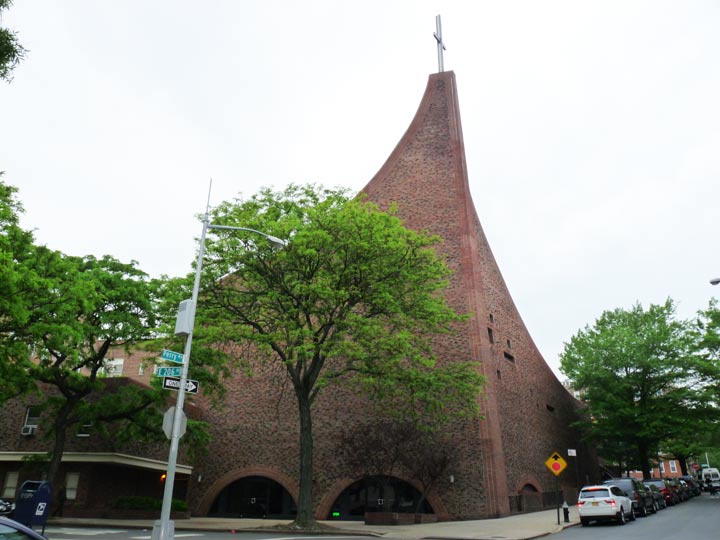
2020 has been a strange year to say the least. I haven’t been in Staten Island at all for the first time since I began initial site photography in 1998, and my visits to the Bronx have been limited to two areas: Riverdale/Spuyten Duyvil and City Island. Needless to say, I plan much more extensive work in both boroughs when the health emergency lifts.
From a few years ago in Norwood…
Norwood was originally part of the Varian family’s dairy farm. The Varians, who produced a New York City mayor, owned the oldest house in the area, which is still standing. The name either comes from “North Woods” or from Carlisle Norwood, a friend of Leonard Jerome, the grandfather of Winston Churchill who owned the nearby Jerome Park Race Track in the 1860s. The neighborhood was laid out in 1889 by entrepreneur Josiah Briggs.
For a couple of decades in the late 20th Century, Norwood and its immediate neighbor to the south, Bedford Park, were major Irish enclaves, after immigrants from Northern Island during the era of The Troubles fled the auld sod and settled here, in Woodlawn Heights to the north, and in Queens’ Woodside. For a time Norwood became known as “Little Belfast” and was a hotbed for supporters of the Irish Republican Army, which sought to sever Northern Ireland’s ties with the United Kingdom by violent means. Eventually the Irish influence in the area lessened, as many Irish returned home to participate in the homeland’s roaring economy in the 1990s and early 2000s.
St. Brendan’s is a Catholic parish and boasts an imaginative piece of architecture on Perry Avenue between East 206th and 207th. The parish was organized in 1908 and gained this church building, built in the form of a ship, in 1967.
According to legend, St. Brendan, who lived in the sixth century, was a sailor and navigator and journeyed to what he called ”the island of the blessed” or St. Brendan’s Island, considered by some to be the Faeroe Islands, Iceland, or even further west to Newfoundland, making him the first European to visit North America, centuries before the Norse made it. At this remove, anything can only be speculation.
Check out the ForgottenBook, take a look at the gift shop, and as always, “comment…as you see fit.”
12/18/20


9 comments
Isn’t it East 206th and 207th?
If the guys who designed Hitler’s bunker also designed churches thats probably what it would look like
I think that is East 2o6th not West.
You got me. Fixed.
There used to be a bowling alley called Norwood Lanes on Grand Avenue in Astoria many years ago. Not sure if there’s any connection to this. It was small, 10 lanes and in the basement next to Astoria Music. It was also a billiards hall for a while after the bowling alley closed.
Tying churches and bowling together, the Lithuanian parish of St. Joseph’s Church in my Connecticut hometown once had a duckpin bowling alley in the basement of its adjacent parochial school. It had something like ten lanes and was popular with leagues. The parish closed the school several years ago, and the bowling alley closed too. Duckpin bowling used to be quite popular in Connecticut but has almost entirely vanished.
Sunnysider, do you remember if it was duckpin bowling at northwood Lanes? I seem to recall that the balls used were smaller than regular
Bowling.
St. Brendan’s Church has the shape of a ship’s prow.
Appropriate for a church named for the navigator, don’t you think?
Since 2015 it’s been known as St. Brendan and St. Anne due to the merging of two parishes. This remained open while the former St. Anne church closed.
And the reason for this unique design is very simple: Vatican II. The church chose to allow new, modern, unique designs alongside the established designs making something like this design happen. If it didn’t have support of the parish, there’s now way in heck it would have been allowed by them to be built in the first place.